Electric Cars Have Become Mainstream in Norway

(Photo source: Thomas Lipke)
Recently, it was announced that the BYD Tang will be delivered in Norway this summer, and previously, XPeng Motors sold 100 G3s in the country. Although the quantity is not big, as a Schengen country in northern Europe, accepting Chinese electric car products still attracts attention from Chinese manufacturers.
Apart from pancakes, Viking legends, auroras and snowy landscapes, “electric cars” have also become a label for this mysterious Nordic country in my mind.
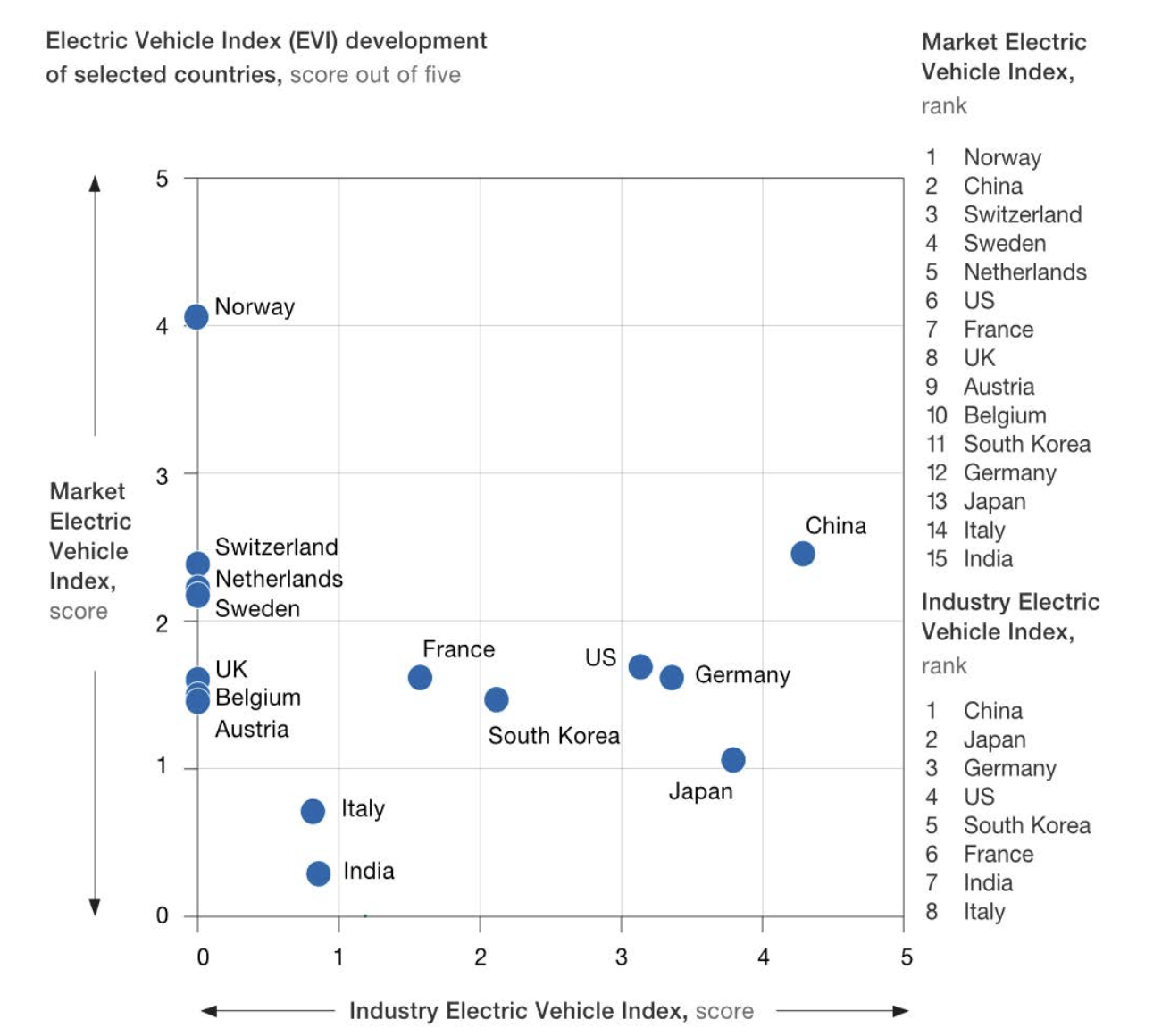
(Development level index of electric vehicles market: McKinsey Center)
The graph from McKinsey Center shows that the development level of the electric car market in Norway not only ranks first, but also far ahead of other countries in the world.
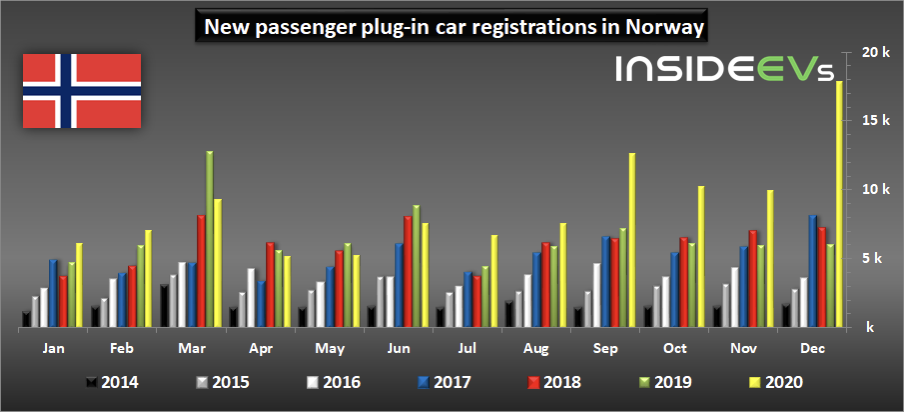
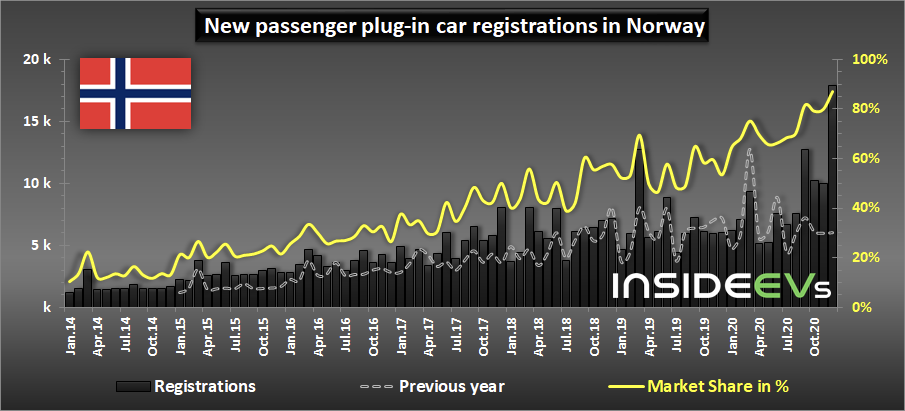
(Newly registered plug-in passenger cars in Norway, source: InsideEVs)
According to InsideEVs, in 2020, pure electric and plug-in hybrid vehicles accounted for about 75% of the annual sales in the Norwegian car market, of which pure electric vehicles accounted for half (54.3%), making Norway the first country in the world with pure electric vehicle sales greater than that of fuel vehicles.
According to the strategic analysis of the Norwegian electric vehicle market written by Frost & Sullivan, the penetration rate of electric vehicles in Norway is close to 100%! Norway is also the country with the highest electric vehicle penetration rate in the world. It can be said that in the Norwegian car market, electric vehicles have an absolute dominant position.
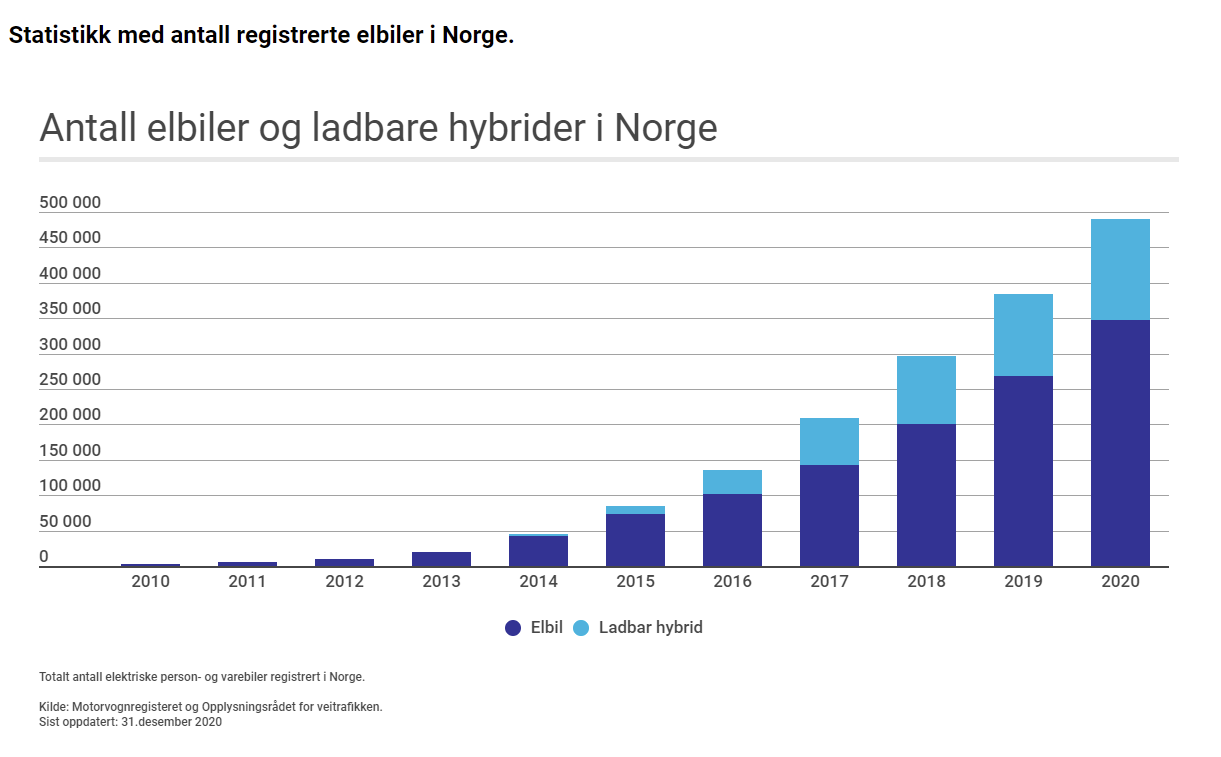
(Statistics on the registration of electric vehicles in Norway: Elbil)The electric car market is not built in a day. Just ten years ago, the sales of pure electric cars in Norway accounted for only 1% of the market (Norwegian Road Federation). However, Norway’s incentives for electric cars began as early as the 1990s.
In 2010, Mitsubishi launched the i-MiEV model in the European market, and the following year, Nissan LEAF was also introduced to Norway. At that point, modern electric cars had finally arrived, and the local electric car market in Norway seemed to be impatient for development, quickly soaring to become the world’s number one in market share.
It is worth mentioning that according to data from InsideEVs, in 2020, the best-selling pure electric car in Norway was the Audi e-tron (9,227 units), followed by the Tesla Model 3 (7,770 units), and the Volkswagen ID.3 (7,754 units) in third place.
In the Norwegian pure electric car market in 2020, we can find Korean Hyundai Kona Electric, Japanese Nissan LEAF, German Mercedes-Benz EQC, Swedish Volvo Polestar 2 and even Chinese MG ZS EV. These models all sold nearly 3,000 units annually, demonstrating that the Norwegian market is compatible with electric car models from around the world.
Seeing this, you may have the same question as me: How did Norway develop its electric car market in this high-latitude country where nearly half of its territory is within the Arctic Circle?
Various factors contribute to Norway’s unique electric car market
Decisive factor – policy
First of all, the Norwegian government’s policy towards electric cars has been predictably friendly for a long time. Because various political parties in Norway have formed a good and positive consensus regarding policies towards electric cars, consumers have strong confidence in electric cars as well.
This “mutual assistance” in confidence has formed a virtuous cycle among the Norwegian people, effectively promoting the promotion of electric cars.
Traditionally, policies favorable to electric cars began in 1990 when Norway abolished the purchase tax on zero-emission cars (the average purchase tax on cars was 1,000 euros at the time).
Later, in 1996, the annual road tax for electric cars was greatly reduced. In 1997, tolls for electric cars were waived.
Starting in 2001, even leasing electric cars could enjoy a 25% VAT exemption.
Norway gradually reduced the purchase cost of electric cars to the lowest level to improve the cost-effectiveness of electric cars at that time.
Subsequently, the government also increased the road traffic rights of electric cars by allowing them to enter bus lanes, priority parking, and free ferry rides.
Thus, through “open source,” the Norwegian government gradually improved the cost-effectiveness and road traffic rights of electric cars to compete with gasoline-powered cars head-on.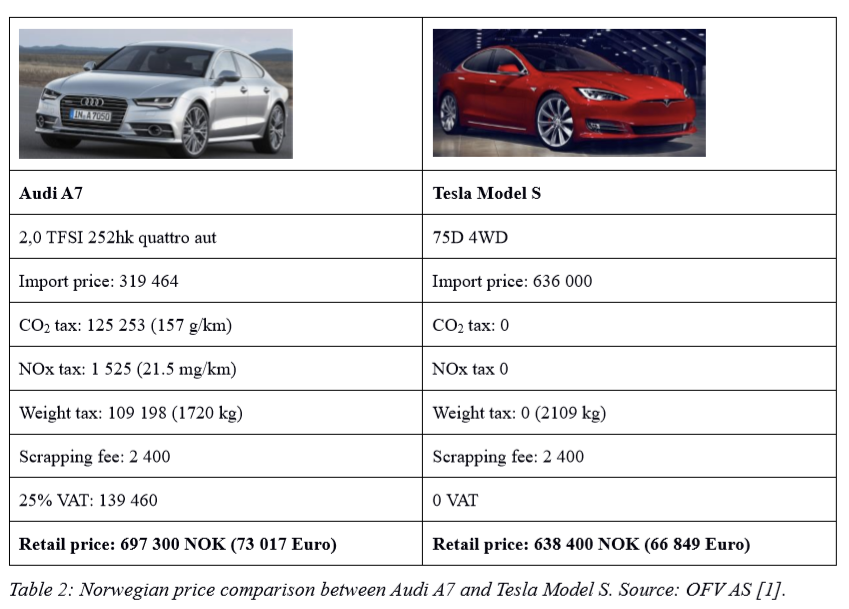
(Comparison of Audi A7 and Tesla Model S prices in Norway (2017): Elbil)
After reading the above comparison, if you were Norwegian, how would you choose?
In terms of “throttling,” the Norwegian government’s attitude towards fuel vehicles can be seen from the import price of the A7.
As an importer of automobile products, Norway itself imposes high taxes on fuel vehicles: greenhouse gas taxes (726 Norwegian kroner/kg), as well as registration taxes based on vehicle weight, carbon dioxide emissions, nitrogen oxide emissions, and cylinder capacity.
The complex and numerous tax projects have pushed up the selling price of fuel vehicles, highlighting the cost-effectiveness of pure electric models.
In Norway, the clear policy orientation of the government is precisely the main reason why everyone has turned to electric vehicles.
Better Energy Supplement Experience
After “frugal ecology,” the cost-effectiveness of electric vehicles as a commuting tool is obviously prominent. However, the biggest problem that lies across the user experience is the energy replenishment of charging.
After the financial crisis in 2008, in order to stimulate economic recovery, guarantee employment, and produce 1,800 conventional Schuko points (household charging piles) within two years from 2009 to 2010 across the country, costing 50 million Norwegian kroner, although many first-generation Schuko points cannot continue to be used today, it did promote the use of electric vehicles at that time.
This also made Norwegian people accustomed to using household charging as the main way to supplement electric vehicles.
In terms of layout of fast charging stations, the Norwegian government spent 50 million Norwegian kroner on construction from 2010 to 2014. However, there was no complete and unified payment system in the early stage. Most operators were public utility companies, which also buried hidden dangers for future debates on whether to unify payment standards.
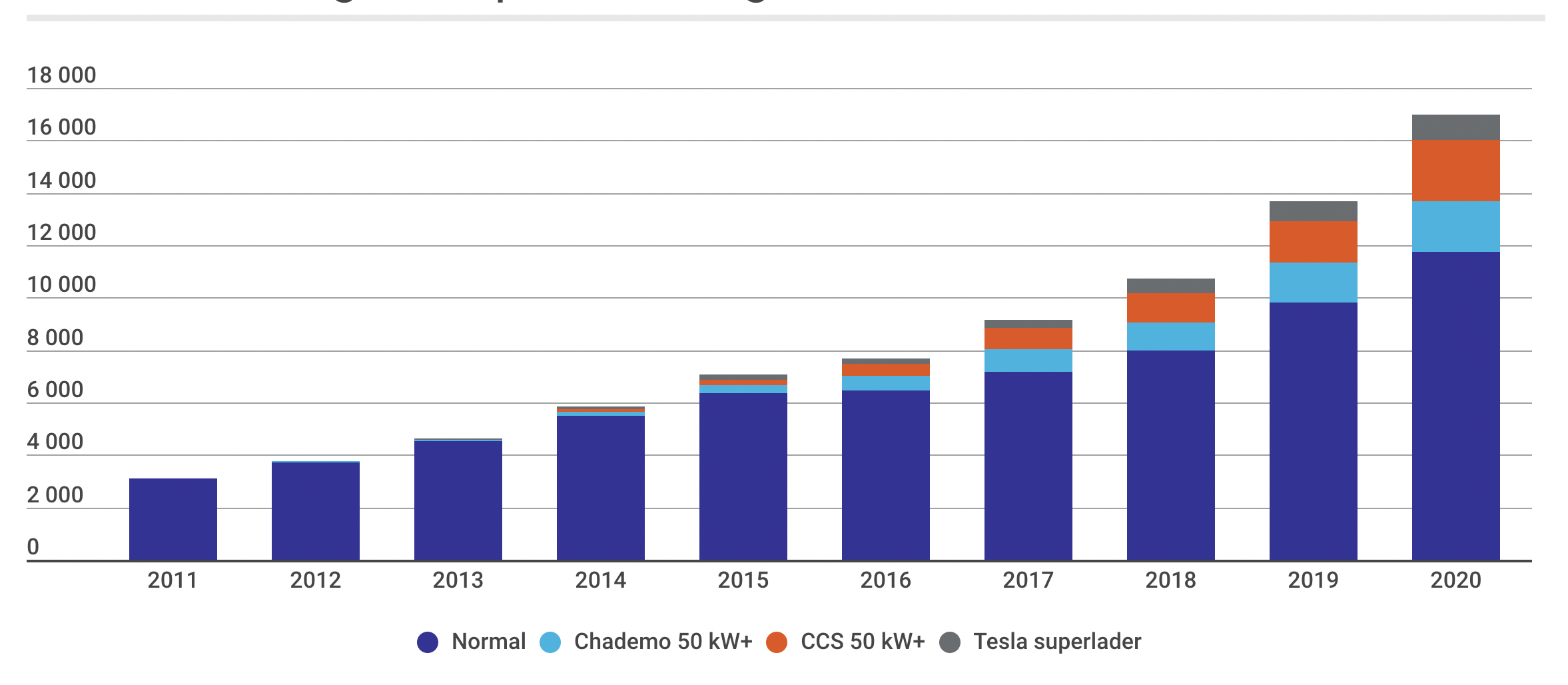
(Number of public charging poles in Norway: Elbil)
As of now, Norway has about 17,000 public charging poles, and the public charging network covers almost the entire country.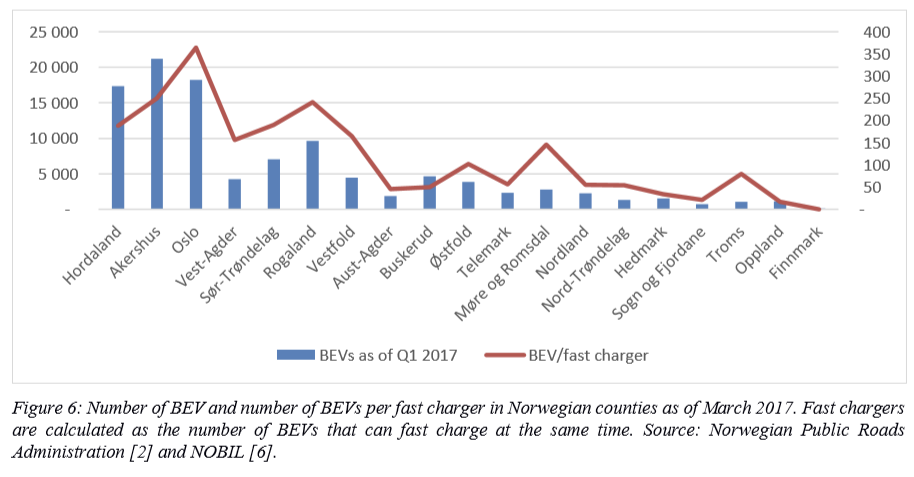
(As of March 2017, the number of fast charging stations and BEVs in Norway: Norwegian Public Roads Administration and NOBIL)
The layout of Norway’s fast charging stations is closely related to the distribution of electric vehicles, demonstrating a strong market orientation. This has led to a scattered distribution of public fast charging stations in remote areas of Norway and an unsatisfactory experience of fast energy replenishment.
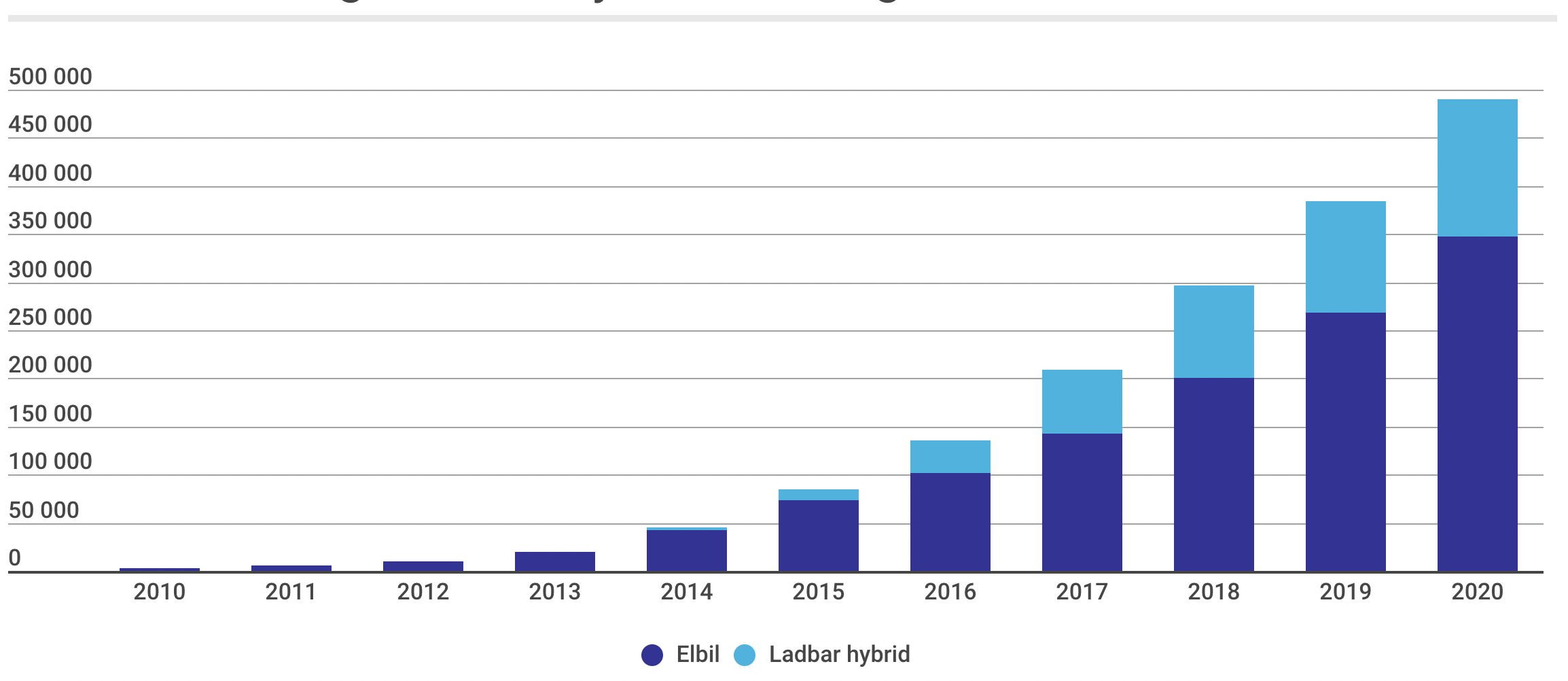
(Number of Norwegian electric vehicles (including plug-in hybrid): Elbil)
Of course, we also need to take into account the number of electric vehicles in Norway as a reference. As of 2020, the total number of electric vehicles in Norway is about 490,000.
Obviously, the number of public charging stations in Norway cannot meet the charging needs of electric vehicles in Norway. Therefore, it can be inferred that Norwegians mainly rely on home charging to achieve the range replenishment of electric vehicles.
As a developed country, Norway has a relatively low population density and less regional mobility of its population compared to developing countries. Therefore, Norwegians usually have their own yards, which makes home chargers the most suitable way for them to charge their electric vehicles.
In response to this hypothesis, I consulted the blogger “Norwegian Laowang” on Douyin (everyone is welcome to provide data to further confirm my idea), which also confirms my guess.
Therefore, the main way for Norwegians to recharge their electric vehicles is through home charging, and public charging stations are only an improvement to the overall charging experience.
The special energy foundation that drives Norway

(Image source: Clyde Thomas)
What is less known is that Norway is the world’s third-largest exporter of natural gas, and the country can meet 20 to 25% of the European Union’s demand for natural gas. Almost all of the oil and gas extracted in Norway is used for export, and the value generated by oil and gas exports almost equals the total value of all other goods exported by Norway.One of the economic pillars of Norway is the extraction and export of fossil fuels. But why doesn’t Norway use the oil it extracts from its own country, which is nearby and of good quality and cheap?
This can be traced back to 1997 when the EU established the EU Emissions Trading System to meet the emissions reduction commitments of the Kyoto Protocol. Simply put, countries that do not meet emissions standards are fined, while those that do earn money.
Norway itself began levying a carbon tax as early as 1991, with rates varying according to different industrial sectors.
The oil and gas industry was hit hardest by the tax, but it also forced Norway’s local oil and gas industry to seek technological breakthroughs to reduce carbon emissions in production processes.
However, as one of the economic pillars of Norway, the export of oil and gas cannot be eliminated in the short term.
Therefore, under pressure from the carbon tax and domestic economic demand, Norway exports almost all of its extracted fossil fuels, allowing other countries to complete the “carbon emissions” process.
In this way, the problem of carbon emissions is greatly alleviated. But how is the energy supply for the production and life of the Norwegian people solved?
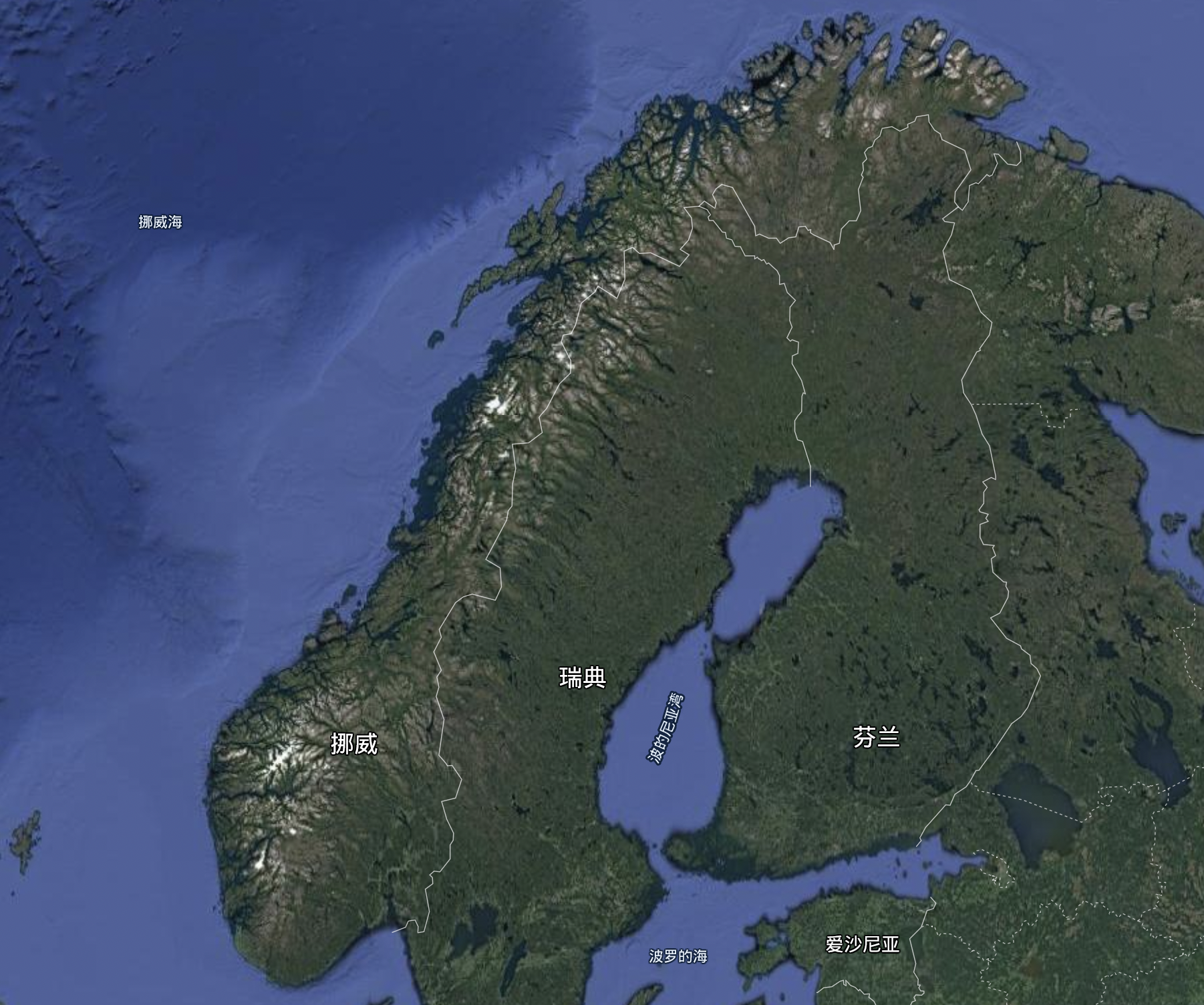
(Google Maps)
This brings us to Norway’s abundant hydropower resources. The country is bordered by the Scandinavian Mountains to the east and the Norwegian Sea to the west. Rivers flow from east to west, with a large drop in elevation. Moreover, influenced by the North Atlantic warm current, the annual precipitation is average throughout the year, and the rivers do not freeze in winter.

(Source: Will Smith)
On the one hand, Norway has abundant hydropower resources that can be utilized. On the other hand, due to the pressure of the EU Emissions Trading System, hydropower has become the main way of energy supply in Norway.
Norway’s domestic hydropower resources exceed demand, and the country has even exported excess electricity to other countries. As a result, Norway’s electricity prices are among the lowest in the world. According to data from the Norwegian Statistics Bureau, the average selling price of electricity in Norway is around 22.2 euros per kilowatt-hour, equivalent to about 0.2 yuan in Chinese currency.
Norway’s low electricity prices make the cost of using electric vehicles almost negligible, which is a great advantage for promoting electric vehicles. On the other hand, hydropower, as a clean energy source, has also helped the Norwegian government achieve its emissions reduction goals, achieving multiple benefits.
Norway is not as “cold and frozen” as one might imagine.
(Image source: Vidar Nordli-Mathisen)
As mentioned earlier, western Norway is influenced by the North Atlantic warm current, and the east is adjacent to the Scandinavian Mountains. These unique geographical conditions not only make Norway’s rivers densely distributed but also make Norway not as cold as imagined as the “land of the polar circle.”
Compared with other regions at the same latitude, the average annual temperature in some parts of Norway is around 10 degrees Celsius, and the difference between winter and summer temperatures is not very large. It is rare to see temperatures as low as minus tens of degrees Celsius in the north of our country. Of course, the high-altitude areas in the Arctic Circle in northern Norway are exceptions.
Therefore, the range reduction and charging efficiency of Norwegian electric vehicles are not significantly affected, even in the long winter.
Strong purchasing power of Norwegian people
Norway’s pillar industries include oil and gas exports, hydropower, seafood, and tourism. Especially oil and gas exports, but with the proven reserves of the North Sea oil field reaching its peak in 1999, the Norwegian government has also begun to consider how to transform the economic structure to reduce dependence on oil and gas.
However, at present, Norwegian people are still very wealthy. Norway’s GDP per capita has long been ranked second or third in the world (second only to Luxembourg and Switzerland). For example, in 2019, Norway’s GDP per capita was 75,420 US dollars. Buying and replacing cars is relatively easy for them.
High environmental awareness of the public
When it comes to the environmental awareness of the Norwegian people, it is the most frequently mentioned topic when I search for information. For those who have lived in Norway for a long time, they can talk about it freely. However, let me be frank; I don’t think this is the main or fundamental reason why electric cars have such a high market share in Norway.
Summary
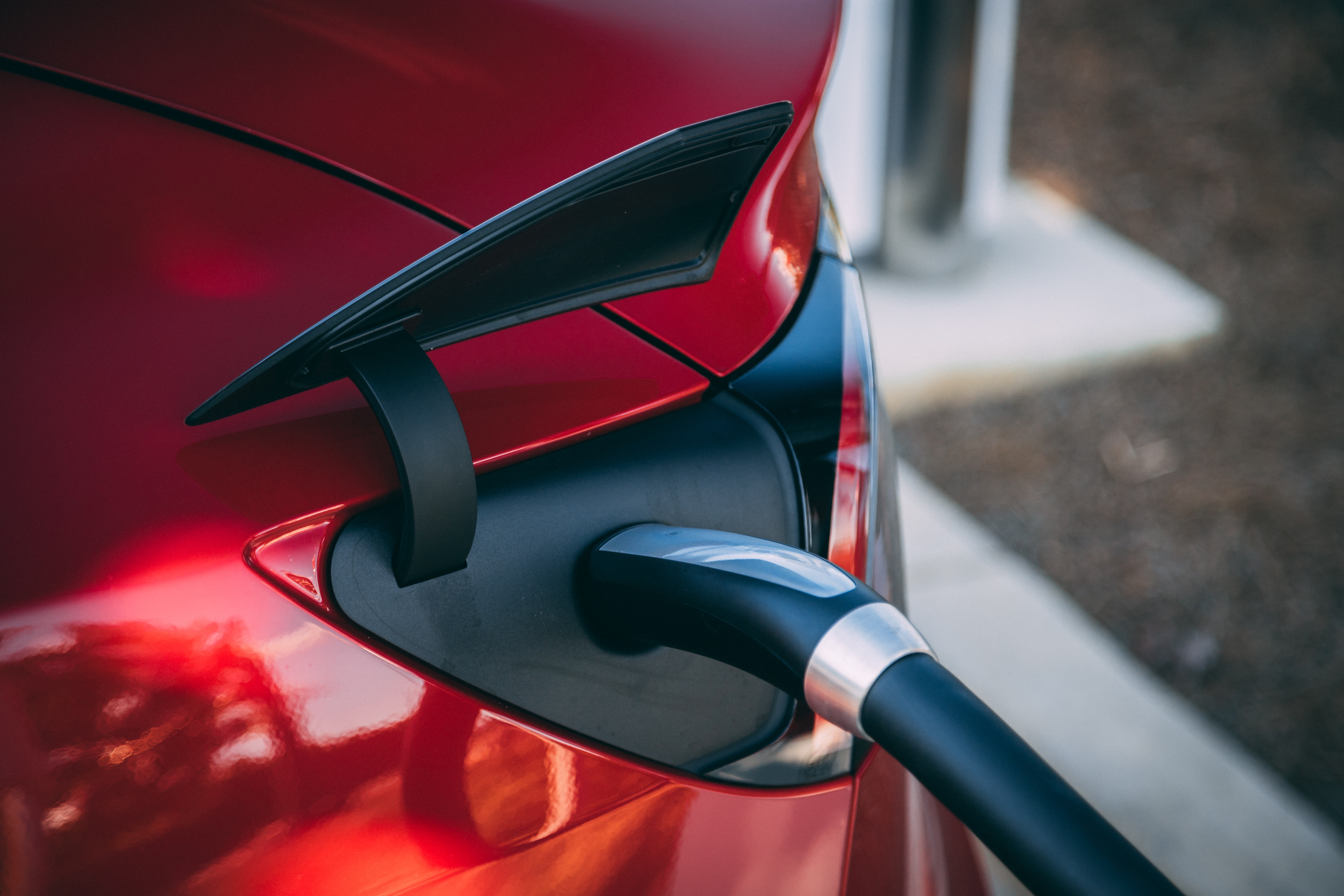
(Image source: Vlad Tchompalov)
The main reason for the high penetration rate of electric vehicles in Norway is actually the government’s policy guidance, combined with some unique advantages, which has made electric vehicles the mainstream of the Norwegian car market.
At this point, I finally solved the mystery of the “electric vehicle kingdom.”
Due to the needs of the sublimation theme, these days, I have been thinking about the significance of Norway’s case for our country. Apart from Norway’s unique advantages (fossil energy, people’s income, and abundant hydropower), I found that our policies related to the improvement of electric vehicle road rights and tax relief are very similar to Norway’s.And thanks to our country’s title of “infrastructure maniac”, the construction of public rapid charging stations is steadily increasing. Coupled with the advantages of the system, many underdeveloped areas of public charging and energy storage infrastructure for electric vehicles are very advanced. This indeed improves the experience of electric vehicle energy replenishment during travel.
But the problem is that our country is vast and the terrain is complex, and the construction of charging stations requires long-term planning. As home charging is recognized as the best form of energy supplementation, its application in China is actually very complex. This can be borrowed from the Norwegian government’s unified layout of home charging stations.
So I believe that China’s energy supplementation will also be in a long-term game between home charging and public fast charging.
Final Thoughts
Although I know the nickname “electric car dad” still exists, I think you, who’s reading this article, should be a firm supporter of “new four modernizations”. So please share it with your friends and tell them that there is a country in the world where electric car sales have far exceeded those of gas cars, where people drive electric cars every day, and China will surpass it in many dimensions in the future.🔗 Information sources: Norwegian Electric Vehicle Association Elbil, Insideevs, Norwegian Petroleum Directorate, Statistics Norway, Strategic analysis of the electric vehicle market in Norway
This article is a translation by ChatGPT of a Chinese report from 42HOW. If you have any questions about it, please email bd@42how.com.
